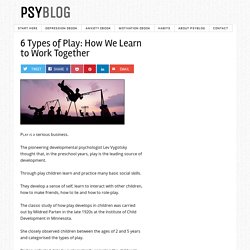

Jesica Ortiz Cárdenas
From Medellín, Colombia.
Effective Teacher-Child Interactions. Carol Dweck: The power of believing that you can improve. How can parents and teachers best educate young children? What principles can both teachers and parents bring to the education of very young children? Gillian Craig, who was part of the Learning Time with Shaun and Timmy writing team, explains. As teachers and parents, we follow certain principles in our roles. Often though, these principles overlap and all we need to do is recognise and reinforce these areas. Ask (the right) questions When my daughter came out of her class one day shortly after her course started, I asked her, 'What did you do in class today?
'. Although my daughter is only two years old, (and more experienced parents than me would not have asked such a broad question to start with), questioning our children at any age about what they have done in class is a natural thing to do. Similarly, a child’s artwork can provide a prompt for asking questions: 'What (or who) is it? ' Listening Skills for Staff.
A longitudinal investigation of the role of quantity and quality of child-directed speech in vocabulary development. Selective mutism. Selective mutism is a severe anxiety disorder where a person is unable to speak in certain social situations, such as with classmates at school or to relatives they don't see very often.

It usually starts during childhood and, left untreated, can persist into adulthood. A child or adult with selective mutism doesn't refuse or choose not to speak, they're literally unable to speak. The expectation to talk to certain people triggers a freeze response with feelings of panic, rather like a bad case of stage fright, and talking is impossible. In time, the person will learn to anticipate the situations that provoke this distressing reaction and do all they can to avoid them. However, people with selective mutism are able to speak freely to certain people, such as close family and friends, when nobody else is around to trigger the freeze response.
Selective mutism affects about 1 in 140 young children. This page covers the following areas: Assessment of Attention in Preschoolers. Inclusion Development Programme Behaviour Emotional Social Difficulties. B480 Special Need Publication A4 V5 Final MR. Neurodiversity TfS online conference. Teaching English to learners with Special Educational Needs (SENs) – Myths and realities. Schemas in Children’s Play - N a t u r e P l a y.
Written by Clare CaroSchemas in Children’s Play are such an important concept when it comes to the development of our children that it’s worth taking the time to understand them so you can facilitate them when you see them.What are these schemas?

Well it’s really a fancy word for the urges that children have to do things like climb, throw things and hide in small places. I Said I Want the Red Bowl! Responding to Toddlers' Irrational Behavior. Pin It Amelia, told that she can’t have a fifth book before bedtime, shouts: “You are the meanest mommy!

You are not invited to my birthday party!” Derek, when offered a choice between carrots and cheese, not ice cream, before dinner announces: “I don’t like the choices you are choicing me!” Alex hurls a bowl of his favorite cereal off the table and screams, “I said the red bowl, not the blue bowl!” If any of these exclamations sounds familiar, you are not alone. Does my toddler have a short attention span because she won’t sit still for a story?
A: It is perfectly normal for toddlers to not sit still very long—period.

Most don’t like to stay in one place for long now that they can explore in so many new ways—by running, jumping, and climbing. So, an adult’s idea of snuggling on the couch to hear a story may not be the same idea a toddler has for story-time. You may only be able to read or talk about a few pages in a book at a time. ARTGBaudrillardJeanLaSociedadDeConsumoSusMitosSusEstructuras. Symbolic play and language development. Highlights Longitudinal indication for the link between simple symbolic action and symbolic development. Simple symbolic actions link to babbling and complex symbolic outputs. Frequency at initiation of babbling associated with initiation of complex symbolic behaviors. Results support a direct-path hypothesis and an indirect one, rather than a dual-path hypothesis. Mother's responsiveness is related to the production of symbolic play. Abstract.
Scientists Say Child's Play Helps Build A Better Brain : NPR Ed. Deion Jefferson, 10, and Samuel Jefferson, 7, take turns climbing and jumping off a stack of old tires at the Berkeley Adventure Playground in California.

The playground is a half-acre park with a junkyard feel where kids are encouraged to "play wild. " David Gilkey/NPR hide caption toggle caption David Gilkey/NPR. The cognitive benefits of play: Effects on the learning brain. © 2008 - 2014, Gwen Dewar, Ph.D., all rights reserved Science supports many of our intuitions about the benefits of play.

Playful behavior appears to have positive effects on the brain and on a child’s ability to learn. In fact, play may function as an important, if not crucial, mode for learning. Want specifics? Here are some examples. Animal experiments: Play improves memory and stimulates the growth of the cerebral cortex In 1964, Marion Diamond and her colleagues published an exciting paper about brain growth in rats. When researchers examined the rats’ brains, they discovered that the “enriched" rats had thicker cerebral cortices than did the “impoverished" rats (Diamond et al 1964). Subsequent research confirmed the results—rats raised stimulating environments had bigger brains.
The magic of child-directed play. Play to Learn: Discussion. Play to Learn. Password protected padlet. Why play-based learning? (free article) - Early Childhood Australia. Different types play. Importance of play for babies & children. Play is more than just fun for babies and children.

It’s how they learn best, and how they work out who they are, how the world works and where they fit into it. You can read this article in a selection of languages other than English. The importance of play Playing is one of the most important things you can do with your child, because play is essential for your child’s brain development. The time you spend playing together gives your child lots of different ways and times to learn. Play also helps your child: build confidence feel loved, happy and safe develop social skills, language and communication learn about caring for others and the environment develop physical skills.
How young children learn English through play. As we release Learning Time with Timmy – our first app for early-years learners of English – Danitza Villarroel, a teacher on our Learning Time with Shaun and Timmy course in Chile, explains the importance of learning through play, and offers a few tips for teachers new to this age group. Teaching English to pre-school children can be daunting for teachers new to this age group. Young children have shorter attention spans than older children and adults, and they're still learning their mother tongue. But teaching these learners can be enormously rewarding once you've taken a few basic principles on board. The importance of active learning Active learning means fully involving children in the learning process. ZERO TO THREE. 6 Types of Play: How Children's Play Becomes More Social.
Play is a serious business.

The pioneering developmental psychologist Lev Vygotsky thought that, in the preschool years, play is the leading source of development. Through play children learn and practice many basic social skills. They develop a sense of self, learn to interact with other children, how to make friends, how to lie and how to role-play. The classic study of how play develops in children was carried out by Mildred Parten in the late 1920s at the Institute of Child Development in Minnesota. Getting the right balance between adult-led and child-initiated learning. As an early years practitioner you will know the importance of creating the right balance between adult-led and child-initiated learning.

Help all children learn and develop with this guide. Adult-led activities are based on our own professional understanding of what we should teach young children and what experiences they should have. Heuristic play. Heuristic play is rooted in young children’s natural curiosity.

As babies grow, they move beyond being content to simply feel and ponder objects, to wanting to find out what can be done with them. Toddlers have an urge to handle things: to gather, fill, dump, stack, knock down, select and manipulate in other ways. Listen to Your Mother. Young children face a remarkable challenge in learning to use the language of their culture. Toddlers vary widely, however, in the rate at which they learn new words.1 A team of Harvard Graduate School of Education researchers set out to ask whether and how children's language environment can impact vocabulary development.
In their study of mother-child pairs from low-income families, they found that mothers who used many different words (not just many words) had toddlers with faster growth in vocabulary use. During the toddler and preschool years, most children learn to use hundreds of words, combining them into sentences and engaging in conversation with others. From previous research, we know that variation in vocabulary growth relates to child characteristics like gender, and also to parental factors. What did they find? 1Huttenlocher, J., Haight, W., Bryk, A., Seltzer, M., & Lyons, T. (1991). 2Bauer, D.J., Goldfield, B.A., & Reznick, J.S. (2002). 3Hoff-Ginsberg, E. (1998). Let's Talk. Why does my toddler love repetition? Paediatric speech and language therapist. It may test your patience when your toddler demands 'Row, row, row your boat' for the 10th time.
But there's a good reason for her insistence. How can I help my child to start talking? (Video) Health visitor Sara Patience describes how you can help develop your child's language skills by talking and playing with her. Show transcript Hide transcript. The Woman Who Changed Her Brain: Barbara Arrowsmith-Young at TEDxToronto.